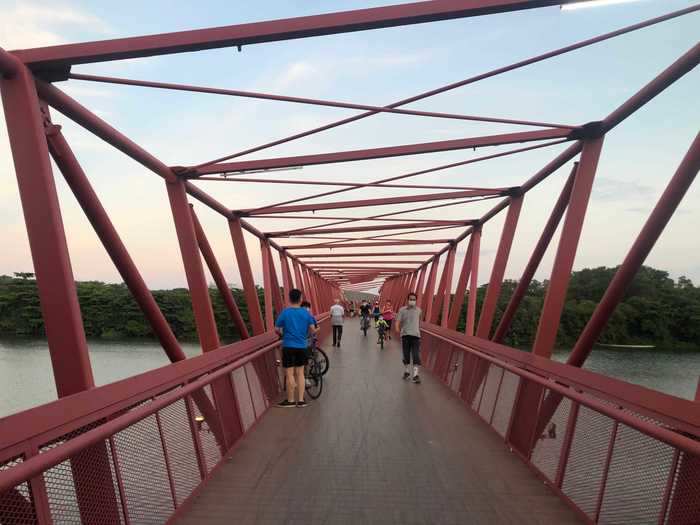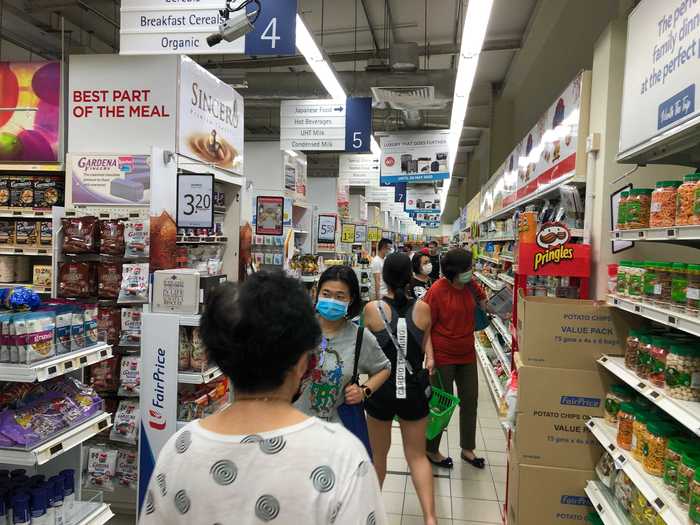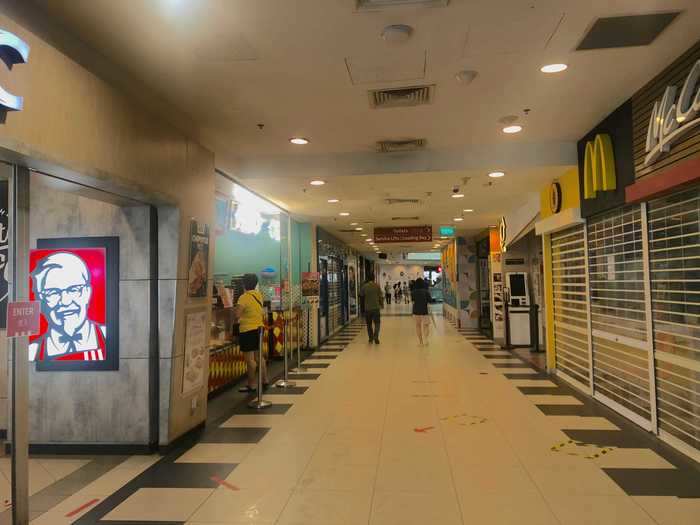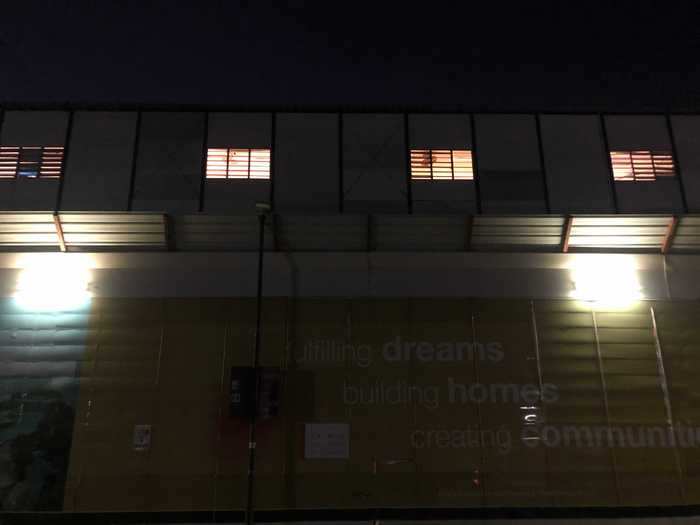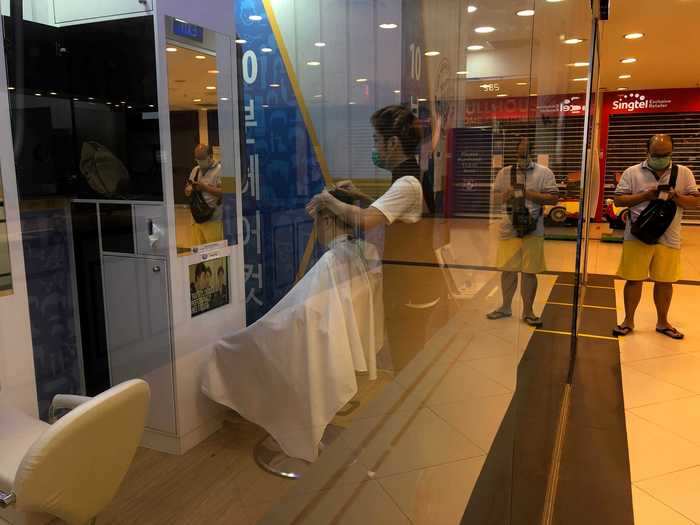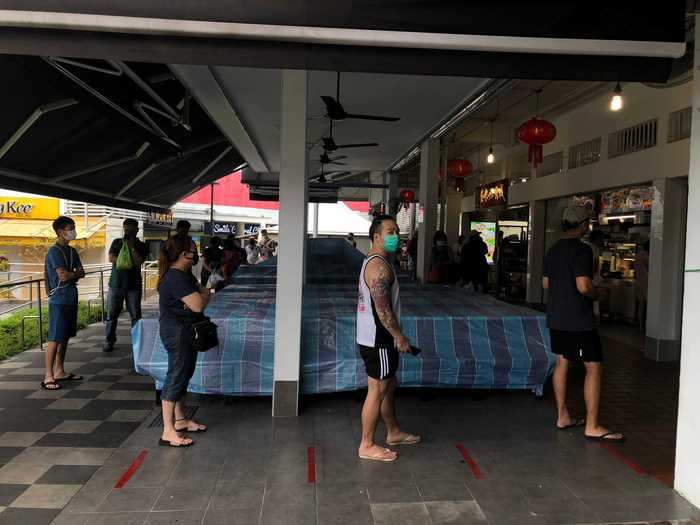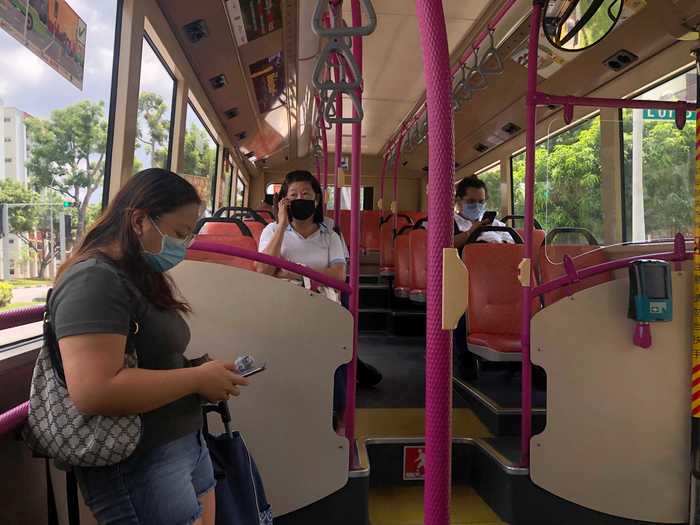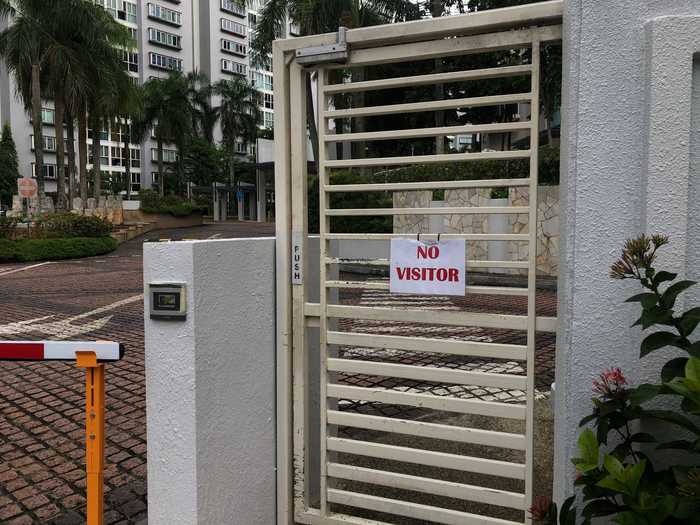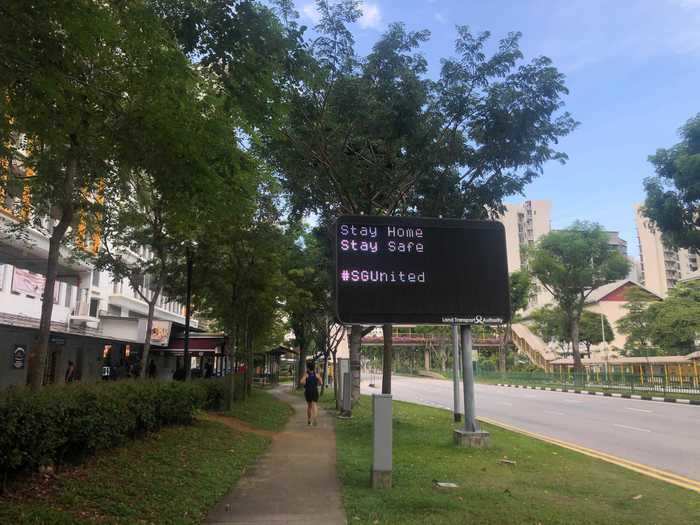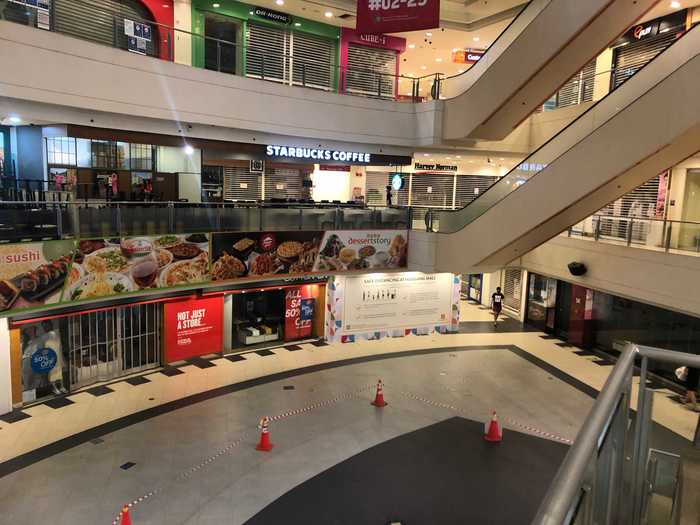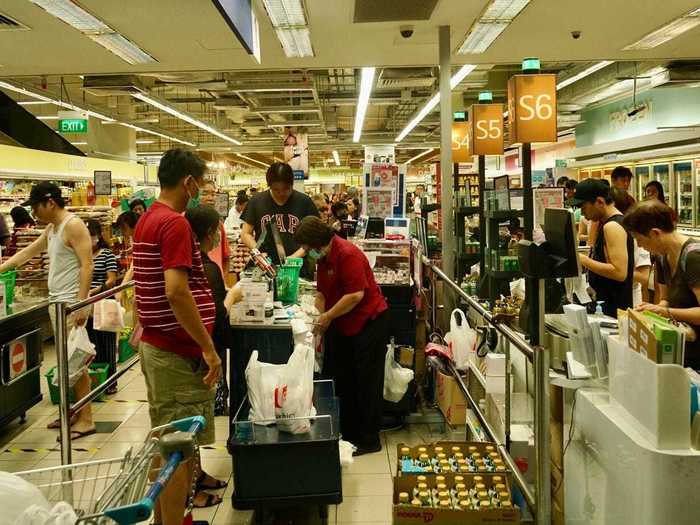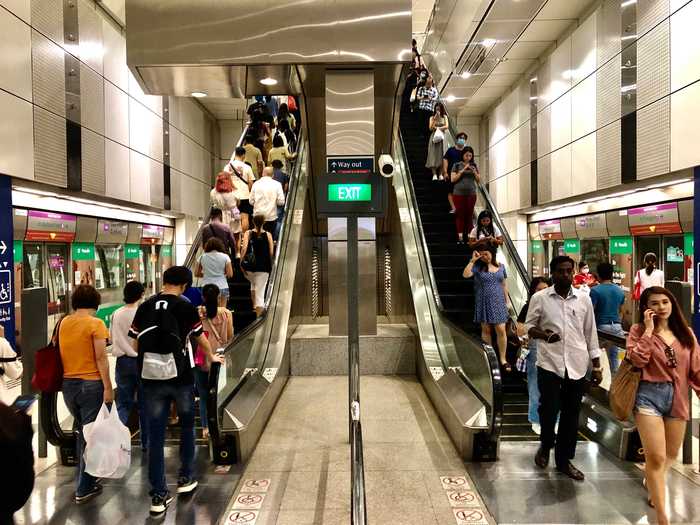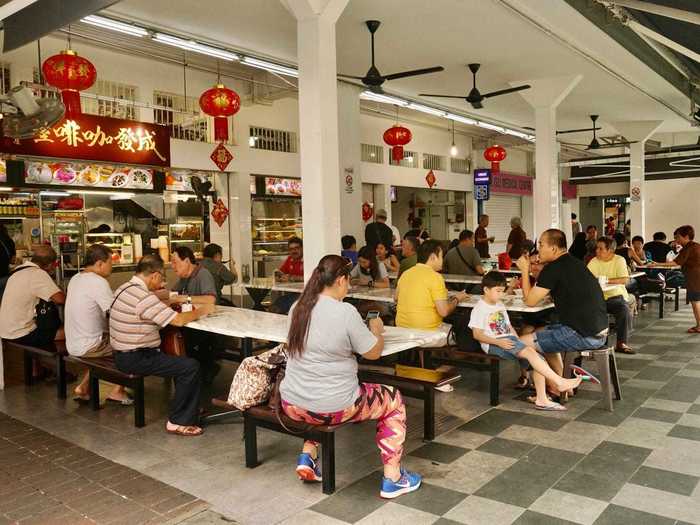Keshia Naurana Badalge for Business Insider
- On April 7, Singapore announced it would be shutting down until May 4 as it battled as second wave of the coronavirus.
- The "circuit breaker" measures were later extended through June 1.
- Under new legislation, public and private gatherings of any size are no longer allowed and restaurants are allowed to serve takeaway orders only.
- To manage the crowds at four popular wet markets in Singapore, Singaporeans with an even last digit of their NRIC number will be allowed to shop there on even days of the month. Singaporeans with an odd last digit can shop there on odd days.
- Visit Business Insider's homepage for more stories.
Singapore is three weeks into a lockdown that authorities are calling a "circuit breaker."
From bubble tea shops being specifically ordered to shutter (they are very popular and draw crowds yet are non-essential in a pandemic), to having your national identification number (NRIC) determine the designated day you can enter four wet markets in Singapore, here's what the lockdown looks like here.
Read the original article on
Business Insider
The only time I take my mask off while I'm outside is to go on a run. I run along the Lorong Halus red bridge to Coney Island almost every day.
Keshia Naurana Badalge for Business Insider
Fortunately, we are still allowed to walk our dogs as long as we have a mask on. This is a daily joy I relish in; my friends in Italy and South Africa are not given this same freedom. I like to think my dog is grateful as well.
To manage the crowds at four popular wet markets in Singapore, Singaporeans with an even last digit of their NRIC number will be allowed to shop there on even days of the month. Singaporeans with an odd last digit can shop there on odd days.
Inside a NTUC supermarket in Singapore.
Keshia Naurana Badalge for Business Insider
I tend to shop at my neighborhood NTUC Supermarket instead, so this hasn't been an issue for me so far.
My grandmother, who I live with, helped with a bang trim. I think she did a better job than I ever did, growing up.
The author, getting a haircut at home.
Keshia Naurana Badalge for Business Insider
On April 21, Singapore extended "circuit breaker" measures through June 1 and put a stop to more services, such as grass-cutting.
McDonalds and bubble tea shutters, but KFC and pizza stays open.
Keshia Naurana Badalge for Business Insider
Hair salons were told to shutter, as were standalone bubble tea shops, effective the next day. This led to long queues up to midnight of April 21 as bubble tea fans and those in need of a trim rushed out to get their last cup of bubble milk tea or their last cut.
The majority of the newly identified cases have been men from Bangladesh and India, who come to Singapore on a work pass to perform low-paid labour in cleaning and construction. They are housed in crowded dormitories where social distancing is difficult, if not impossible.
A migrant worker dormitory.
Keshia Naurana Badalge for Business Insider
On more than one instance, I saw people getting a haircut. This stands out because I know that my friends in New York, for example, were already a month into their lockdown and fretting about having to shave their heads or cut their own bangs themselves.
Keshia Naurana Badalge for Business Insider
According to official data and as reported by Reuters, on April 19, Singapore became the country with the highest number of coronavirus cases in Southeast Asia. That next day, April 20, the country identified a record daily number of 1,426 new coronavirus cases.
The "circuit breaker" resembles a partial lockdown, but every country has its nuances. When it was first implemented, we were allowed to go out without masks.
Hougang food stall queue.
Keshia Naurana Badalge for Business Insider
We could take the bus or stroll through the neighbourhood — while practising social distancing. Walking through a mall, you would still see people queueing up at bubble tea shops, at McDonalds, or at a bakery.
Opticians were also open, as were barber shops, hair salons, fruit juice stands, and durian stalls.
While the government directive had previously been to only wear masks when unwell, this, too, was overruled on April 14. Mask-wearing is now mandatory the moment you leave the house.
Adults on a bus in Singapore. Everyone is wearing a mask.
Keshia Naurana Badalge for Business Insider
Families have been barred from visiting each other except to provide care to children or elders in another household.
"No visiting" sign at a Singapore condominium.
Keshia Naurana Badalge for Business Insider
This meant that on April 7th, non-essential services ceased. Schools closed the following day. Under new legislation, public and private gatherings of any size are no longer allowed and restaurants are allowed to serve takeaway orders only.
"Stay Home, Stay Safe."
Keshia Naurana Badalge for Business Insider
Playgrounds and void decks, once the linchpin of life in the heartlands and residential districts, are now covered in barrier tape to keep people out.
An elderly man was even handcuffed for wanting to eat alone at a void deck [an open space found on the ground floor of public housing blocks].
But in the middle of March, Singapore saw a "second wave" of infections, due, in large part, to residents returning home and spreading the virus locally.
A empty shopping center in Singapore.
Keshia Naurana Badalge for Business Insider
As case numbers rose, authorities implemented a "circuit breaker" in April to halt the quickening pace of transmission. Notably, the government has eschewed the word "lockdown."
Throughout March, while people around the world were under quarantine, we Singaporeans were able to keep up most of our routines: We could dine out, go shopping, picnic in parks, visit museums and go to school.
NTUC supermarket in March, before the lockdown.
Keshia Naurana Badalge for Business Insider
The city-state's battle with the virus has been one of challenges and early triumphs. Early on, the country was lauded as a model for coronavirus reaction by the WHO.
A train station in March, before the lockdown.
Keshia Naurana Badalge for Business Insider
Singaporeans were relatively confident in their government's virus strategy. Citizens flooded coronavirus press briefings on Youtube with comments praising the government's preparedness and leadership.
While other cities and countries are flattening the curve or coming out of lockdown, Singapore's rising case numbers have forced the country to do the opposite and shut down from April 7 to May 4. This was later extended to June 1.
Food center in Hougang in March, before the lockdown.
Keshia Naurana Badalge for Business Insider
Meanwhile, Wuhan has lifted quarantine, South Korea and Taiwan have moved towards normal life without ever being locked down, citizens in Spain, Italy and Austria returned to work last week.

